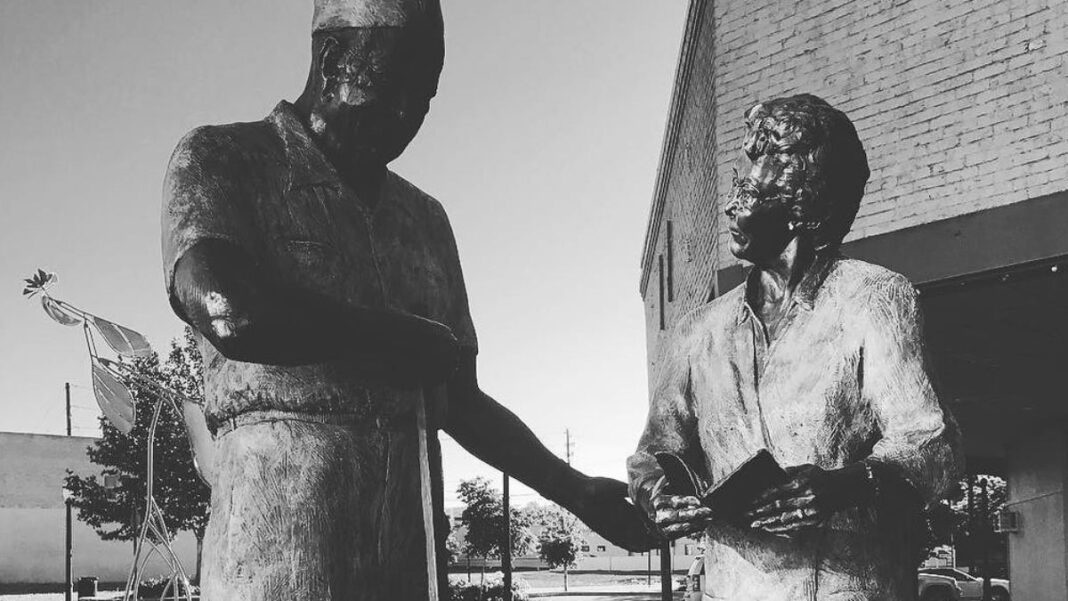The slave trade had an indelible impact on Caribbean culture, shaping it in ways that continue to be felt today. The transatlantic slave trade was a brutal system that forcibly brought millions of Africans to work on plantations in the Caribbean, where they were treated as property and subjected to inhumane conditions. This system had a profound impact on the culture of the Caribbean, influencing everything from language to music to religion.
One of the most significant impacts of the slave trade on Caribbean culture was the creation of a unique blend of African and European cultural traditions. Enslaved Africans were forced to adopt European cultural practices, but they also brought their own cultural traditions with them. Over time, these different cultural influences blended together to create a distinct Caribbean culture that is still celebrated and cherished today.
Despite the brutal legacy of the slave trade, Caribbean culture has persevered and thrived. Today, the Caribbean is known for its vibrant music, delicious cuisine, and rich cultural traditions. The impact of the slave trade on Caribbean culture is a complex and multifaceted topic, but it is one that is worth exploring in order to gain a deeper understanding of the history and culture of this fascinating region.
Historical Overview of the Slave Trade in the Caribbean
Origins and Development
The Caribbean was at the center of the transatlantic slave trade and slavery. The European powers, mainly the Portuguese, Spanish, Dutch, French, and British, established colonies in the Caribbean in the 15th century. The first slaves in the Caribbean were the indigenous peoples of the region, but their numbers were quickly decimated by disease and mistreatment. The Europeans then turned to Africa to supply the labor needed to cultivate their new colonies.
The slave trade in the Caribbean was a lucrative business, and it continued for over 400 years. The trade was driven by the demand for labor in the sugar, cotton, and tobacco plantations. The slave trade was not only a profitable business for European traders but also for African slave traders who captured and sold their fellow Africans to the Europeans.
Transatlantic Slave Trade Dynamics
The transatlantic slave trade was a complex system that involved the movement of people, goods, and money across the Atlantic Ocean. The trade was organized around three main regions: West Africa, the Caribbean, and Europe. European ships would travel from Europe to West Africa to purchase slaves and then transport them across the Atlantic to the Caribbean. The slaves were then sold to plantation owners who put them to work on their farms.
The conditions on the slave ships were inhumane, with slaves packed tightly together in the hold of the ship. Many slaves died during the voyage, and those who survived were often traumatized by the experience. Once in the Caribbean, slaves were subjected to brutal treatment, including beatings, rape, and forced labor.
Legacies of Slavery
The legacy of slavery is still felt in the Caribbean today. Slavery had a profound impact on the culture, economy, and social structure of the region. The Caribbean is a diverse region, with a rich cultural heritage that reflects the influence of African, European, and indigenous peoples.
The legacy of slavery is also evident in the economic disparities that exist in the region. The Caribbean is one of the poorest regions in the world, with high levels of poverty and unemployment. Many of the countries in the region are heavily indebted, and their economies are dependent on tourism and other forms of foreign investment.
In conclusion, the slave trade had a profound impact on the Caribbean, shaping the region’s culture, economy, and social structure. The legacy of slavery is still felt in the region today, and it is important to acknowledge and address the ongoing effects of this history.
Cultural Impact of the Slave Trade
The slave trade had a profound impact on the cultural landscape of the Caribbean, shaping the region’s language, religion, music, dance, cuisine, and social structure. Here are some of the ways in which the slave trade has influenced Caribbean culture:
Influence on Language and Creole Formation
The slave trade brought together people from different parts of Africa who spoke different languages and dialects. As a result, they had to develop a common language to communicate with each other and with their European masters. This led to the development of Creole languages, which are based on European languages but have African grammatical structures and vocabulary. Today, Creole languages such as Jamaican Patois, Haitian Creole, and Trinidadian Creole are widely spoken in the Caribbean and are an important part of the region’s cultural heritage.
Religious Syncretism and Spiritual Practices
The slave trade also brought different religious traditions to the Caribbean. African slaves brought with them their own spiritual beliefs and practices, which were often syncretized with Christianity. This led to the development of new religious practices such as Vodou in Haiti, Santeria in Cuba, and Obeah in Jamaica. These religions are still practiced in the Caribbean today and are an important part of the region’s cultural identity.
Music, Dance, and Festivals
The slave trade also influenced the music, dance, and festival traditions of the Caribbean. African slaves brought with them their own musical traditions, which were blended with European musical styles to create new genres such as calypso, reggae, and salsa. These musical styles are still popular in the Caribbean today and have influenced music around the world.
In addition, the slave trade also led to the development of new dance styles such as the limbo and the rumba. Festivals such as Carnival and Junkanoo are also an important part of Caribbean culture and are celebrated throughout the region.
Culinary Traditions
The slave trade also had a significant impact on the culinary traditions of the Caribbean. African slaves brought with them their own cooking techniques and ingredients, which were blended with European cuisine to create new dishes such as jerk chicken, rice and beans, and callaloo. These dishes are still popular in the Caribbean today and are an important part of the region’s culinary heritage.
Social Structure and Identity
Finally, the slave trade also had a profound impact on the social structure and identity of the Caribbean. The legacy of slavery can still be seen in the racial and social hierarchies of the region, as well as in the continued struggle for social justice and equality. However, the slave trade also helped to create a unique cultural identity in the Caribbean, one that is characterized by resilience, creativity, and diversity.
Frequently Asked Questions
How has the history of slavery shaped modern Caribbean cultural identities?
The history of slavery has had a profound impact on the cultural identities of the Caribbean. The forced migration of millions of Africans to the Caribbean resulted in the creation of a rich and diverse cultural landscape. The mixing of African, European, and Indigenous cultures led to the development of new languages, music, dance, and cuisine. Today, Caribbean culture is celebrated for its vibrancy, resilience, and creativity.
What are the lasting social and economic effects of slavery in the Caribbean?
The legacy of slavery in the Caribbean has had lasting social and economic effects. Slavery created a system of racial inequality that persists to this day. The descendants of slaves continue to face discrimination and marginalization in many aspects of life, including education, employment, and access to healthcare. The economic effects of slavery are also evident in the Caribbean. The region remains one of the poorest in the world, with many countries heavily reliant on tourism and other industries that were developed during the colonial era.
In what ways did African traditions influence contemporary Caribbean music, art, and religion?
African traditions have had a profound influence on contemporary Caribbean music, art, and religion. The rhythms and melodies of African music were blended with European and Indigenous influences to create new forms of music such as reggae, calypso, and salsa. African art forms such as mask-making and sculpture were also incorporated into Caribbean art. African religions such as Vodou and Santeria have also been practiced in the Caribbean for centuries.
What role did the emancipation of slaves play in the political landscape of the Caribbean?
The emancipation of slaves played a significant role in the political landscape of the Caribbean. The abolition of slavery led to the formation of new political movements and the emergence of new leaders. Many former slaves became involved in politics and fought for their rights and freedoms. The struggle for independence in the Caribbean was often linked to the fight against slavery and colonialism.
How has the legacy of the slave trade affected racial dynamics and discourse in the Caribbean?
The legacy of the slave trade has had a significant impact on racial dynamics and discourse in the Caribbean. The history of slavery has created a system of racial inequality that continues to shape social and economic relations in the region. The legacy of slavery has also led to the development of racial stereotypes and prejudices that persist to this day. However, there have also been efforts to promote racial unity and understanding in the Caribbean.
What are the ongoing challenges in the Caribbean that stem from the historical slave trade?
The ongoing challenges in the Caribbean that stem from the historical slave trade are numerous. These include poverty, inequality, and social exclusion. Many Caribbean countries continue to struggle with high levels of unemployment, crime, and violence. The legacy of slavery has also contributed to environmental degradation and the loss of biodiversity in the region. Addressing these challenges will require a sustained effort by governments, civil society, and the international community.

